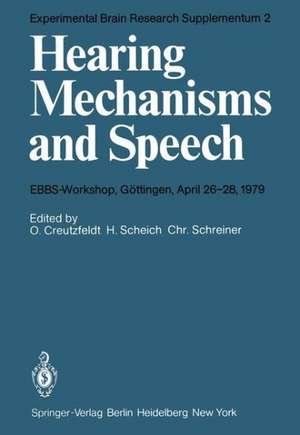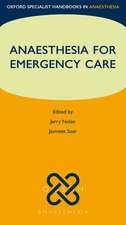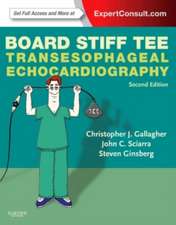Hearing Mechanisms and Speech: EBBS-Workshop, Göttingen, April 26–28, 1979: Experimental Brain Research Series, cartea 2
Editat de O. Creutzfeldt, H. Scheich, C. Schreineren Limba Engleză Paperback – oct 1979
Din seria Experimental Brain Research Series
-
 Preț: 379.30 lei
Preț: 379.30 lei - 15%
 Preț: 659.53 lei
Preț: 659.53 lei -
 Preț: 392.97 lei
Preț: 392.97 lei - 15%
 Preț: 646.94 lei
Preț: 646.94 lei - 18%
 Preț: 1325.52 lei
Preț: 1325.52 lei - 18%
 Preț: 951.47 lei
Preț: 951.47 lei - 15%
 Preț: 650.69 lei
Preț: 650.69 lei - 15%
 Preț: 642.18 lei
Preț: 642.18 lei -
 Preț: 396.02 lei
Preț: 396.02 lei - 15%
 Preț: 652.81 lei
Preț: 652.81 lei - 18%
 Preț: 945.62 lei
Preț: 945.62 lei - 15%
 Preț: 639.08 lei
Preț: 639.08 lei -
 Preț: 389.70 lei
Preț: 389.70 lei - 15%
 Preț: 645.60 lei
Preț: 645.60 lei - 5%
 Preț: 708.06 lei
Preț: 708.06 lei - 15%
 Preț: 650.69 lei
Preț: 650.69 lei - 5%
 Preț: 388.31 lei
Preț: 388.31 lei - 5%
 Preț: 377.16 lei
Preț: 377.16 lei - 15%
 Preț: 648.89 lei
Preț: 648.89 lei - 5%
 Preț: 718.46 lei
Preț: 718.46 lei - 5%
 Preț: 1119.47 lei
Preț: 1119.47 lei - 15%
 Preț: 643.48 lei
Preț: 643.48 lei - 15%
 Preț: 642.36 lei
Preț: 642.36 lei - 15%
 Preț: 652.81 lei
Preț: 652.81 lei
Preț: 726.88 lei
Preț vechi: 765.14 lei
-5% Nou
Puncte Express: 1090
Preț estimativ în valută:
139.09€ • 148.73$ • 115.97£
139.09€ • 148.73$ • 115.97£
Carte tipărită la comandă
Livrare economică 17 aprilie-01 mai
Preluare comenzi: 021 569.72.76
Specificații
ISBN-13: 9783540096559
ISBN-10: 3540096558
Pagini: 440
Ilustrații: XXIV, 414 p. 3 illus.
Dimensiuni: 170 x 244 x 23 mm
Greutate: 0.69 kg
Ediția:Softcover reprint of the original 1st ed. 1979
Editura: Springer Berlin, Heidelberg
Colecția Springer
Seria Experimental Brain Research Series
Locul publicării:Berlin, Heidelberg, Germany
ISBN-10: 3540096558
Pagini: 440
Ilustrații: XXIV, 414 p. 3 illus.
Dimensiuni: 170 x 244 x 23 mm
Greutate: 0.69 kg
Ediția:Softcover reprint of the original 1st ed. 1979
Editura: Springer Berlin, Heidelberg
Colecția Springer
Seria Experimental Brain Research Series
Locul publicării:Berlin, Heidelberg, Germany
Public țintă
ResearchCuprins
I) Functional and structural conditions for transmission of auditory signals in the nervous system..- Basic mechanisms of auditory processing in the cochlea.- On the peripheral coding of the level of individual frequency components of complex sounds at high sound levels.- Universal mechanical response curves for the cochlea.- The human cochlea nuclei.- Coding of complex sounds in the auditory nervous system.- Embryological evolution and typology of cells of the inferior colliculus.- Functional and topographic organization of the auditory cortex.- II) The representation of complex natural sounds in the auditory system..- Neural image of sound in the grassfrog.- Spectro-temporal analysis of auditory neurons in the grassfrog.- Tonotopy and analysis of wide-band calls in field L of the guinea fowl.- Selective responses of neurons to vowel sounds in the auditory neostriatum of the mynah bird.- The increase of response selectivity within the avian auditory pathway.- Encoding of complex sounds by thalamic and cortical neurons.- Time segmentation in central analysis of complex signals.- Temporal suppression and speech processing.- Feature detection by single units in squirrel monkey auditory cortex.- Processing of self-produced vocalizations by single neurons in the auditory cortex of the squirrel monkey (Saimiri Sciureus).- Encoding processes of speech sounds in the auditory system.- Verb and noun meaning of homophone word activate different cortical generators: a topographical study of evoked potential fields.- III) Brain mechanisms of speech perception and production..- Anatomical and functional cerebral organization of phonation in animals.- Basal ganglia participation in aphasia.- Participation of mesial cortex in speech: evidence from cerebral potentials preceding speechproduction in man.- Electrical stimulation mapping of language cortex.- Human language cortex: identification of common sites for sequencing motor activity and speech discrimination.- Studies on language comprehension in hemispherectomy, split brain and asphasic patients. A possible contribution to the knowledge of the physiological mechanisms of speech comprehension.- Timing in speech production: aspects of (German) hesitation vowels.- Inborn vocalizations of the human baby and communicative value for the mother.- IV) Psychoacoustic elements in language..- What acoustic stimulation can teach us about physiological mechanisms underlying speech perception.- An outline of pitch analysis in speech: a hearing theory approach.- Pitch determination of speech signals — a survey.- Virtual pitch and our own voice.- On the perception of spectral information in speech.- Perceptual difference limens in pair-comparison of complex (speech-related) signals.- V) Linguistic elements in speech perception..- Aspects of categorical processing of speech sounds in man: on the determinants of phonetic category boundaries.- Selective adaptation of acoustic and phonetic feature sensitive detectors.- Speech sounds in realtion to speech processing.- Perceptual grouping of speech components.- Aspects of the temporal relationship between speech- and word-recognition processes.- The acquisiton of grammar.- VI) Receptive defects of linguistic elements in aphasia..- Auditory agnosia after lesions of the superior temporal gyrus in monkey and man.- Selective impairment of perception of articulatory place in a case of cortical auditory disorder.- Phonemic auditory discrimination and articulatory defects in aphasia.- Comprehension of natural sounds in aphasia.- Lexical and syntactic factors in languagecomprehension of aphasic patients.- Interaural integration in the perception of complete and truncated words by brain damaged and control subjects.- Auditory analogue of deep dyslexia.- The influence of prosodic features in language comprehension in aphasic patients.











